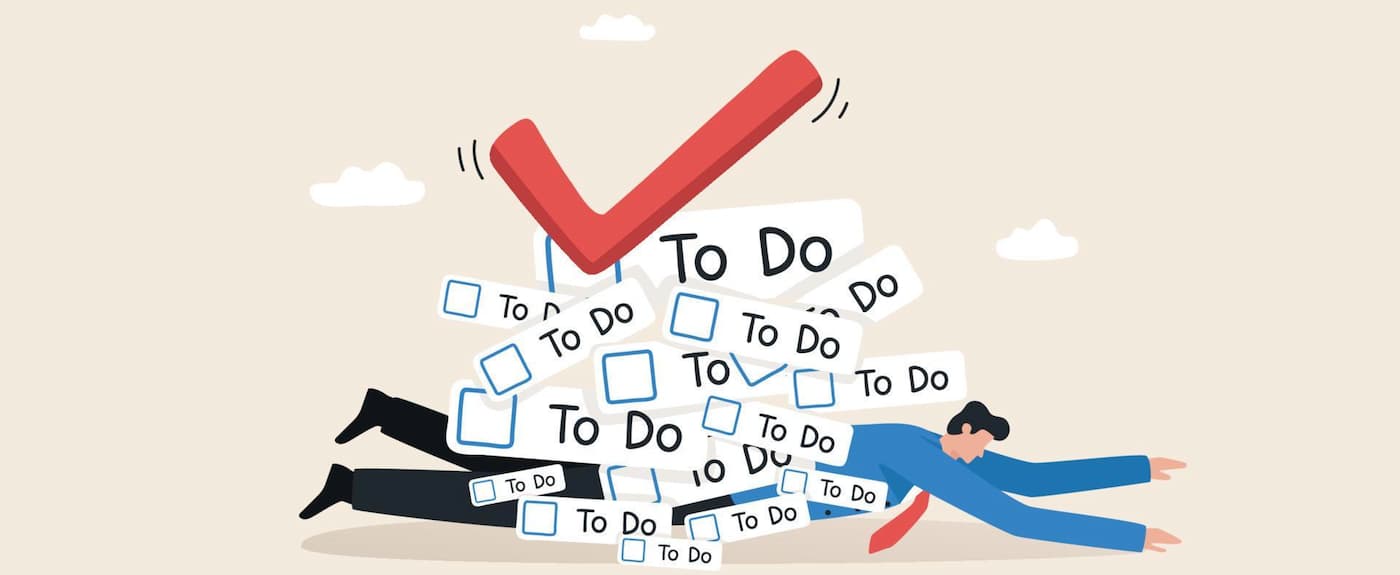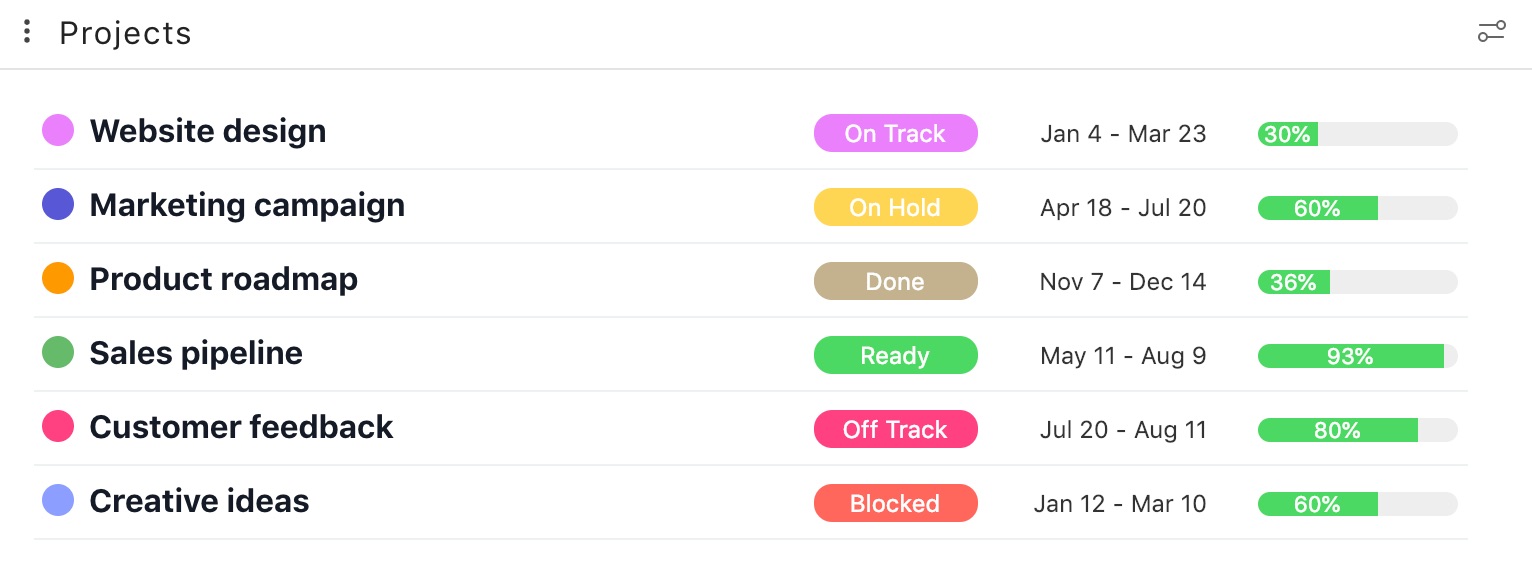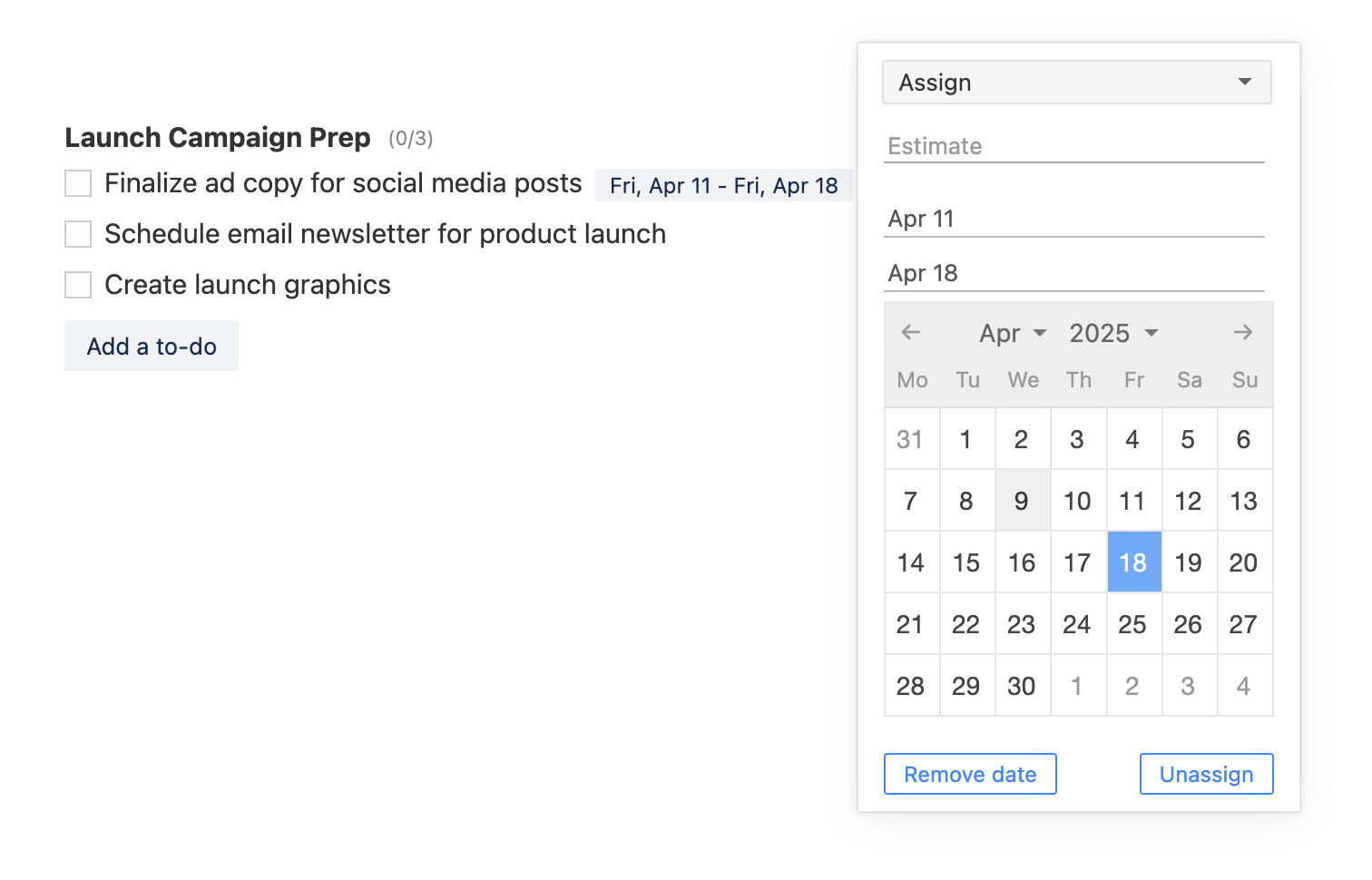Getting tasks done with the GTD method
In today's fast-paced world, effective task management plays a crucial role in maintaining productivity and achieving success. David Allen's Getting Things Done (GTD) method provides a powerful and flexible approach to the task and project management that helps you remain organized, focused, and in control.

This article explores the fundamental principles of the GTD method, provides practical tips for implementing it, and addresses common challenges and mistakes.
By understanding and embracing the GTD method, you can transform your approach to task management, enhance your productivity, and, ultimately, accomplish your goals more efficiently.
Introduction
The GTD method is a time management and productivity system. The core principle of GTD is to capture, clarify, organize, reflect, and engage with tasks, allowing you to focus on what needs to be done while minimizing stress and cognitive overload.
The GTD method and its benefits
The GTD method offers a flexible and adaptable approach to task management that can benefit you in various personal and professional settings. A few of the key benefits of the GTD method include the following:
- Improved focus: By externalizing tasks, GTD frees up mental space for focusing on the task at hand.
- Enhanced productivity: GTD encourages breaking down tasks into actionable steps, making tackling and completing them easier.
- Stress reduction: By having a clear action plan, GTD helps reduce anxiety and stress associated with managing multiple tasks and responsibilities.
- Better prioritization: GTD helps you identify and prioritize important tasks, effectively allocating your time and energy.
- Increased control: By capturing and organizing tasks in a systematic manner, GTD provides a sense of control over one's workload and commitments.
Why effective task management is critical for productivity using the GTD method?
Effective task management is crucial for productivity, as it enables you to allocate your time and resources optimally. The GTD method offers a proven system to help you stay organized and focused.
Streamlining the task management process, GTD ensures that nothing falls through the cracks. By managing tasks in a structured manner, you can minimize the risk of overlooking important tasks, reduce the time spent deciding what to work on next, and focus on taking action.
This leads to enhanced productivity, as you can complete tasks more efficiently and derive greater satisfaction from your work.
1. Understanding the GTD method
GTD method is grounded in key principles that allow you to manage your tasks better, prioritize effectively, and reduce mental clutter. With a clear understanding of how the GTD method works, you can start integrating this approach into your daily routine.
How does the GTD method work?
The GTD method is a comprehensive task and time management system based on the principle that the mind is better suited for processing information rather than storing it.
The system works by guiding you through a series of steps to understand, analyze, and execute tasks, ensuring that no important tasks are overlooked and that all commitments are efficiently managed.
The key principles of the GTD method
The GTD method is built on five key principles, which are designed to help you achieve a state of mental clarity and focus:
- Capture: Collect all tasks, ideas, and commitments that require attention in a trusted system. You can use physical inboxes, digital tools, or a combination of both. The goal is to free the mind from holding onto these items by externalizing them into a reliable capture system.
- Clarify: Process each captured item by determining the next actionable step.
- Organize: Sort clarified tasks into appropriate categories, such as projects, next actions, waiting for, and someday/maybe. Assign due dates, contexts, or priorities as needed. This method of organizing tasks enables you to promptly retrieve the necessary information for taking action on each task at the appropriate time.
- Review: Regularly review and update the GTD system to ensure that it remains current and relevant. Periodic reviews of long-term goals and projects should be performed to maintain alignment with overarching objectives.
- Engage: Take action on tasks according to their priority and context.
2. Getting started with GTD
You can create a personalized GTD system that suits your needs while helping you enhance your productivity and task management skills.
How to set up a GTD system?
Follow these steps to set up a GTD system:
- Select a task management tool that suits your preferences and work styles, such as a physical notebook, digital app, or a combination of both.
- Use a designated space or "inbox" within your chosen tool to capture tasks.
- Process each item in your inbox by defining the specific action required.
- Sort tasks and assign due dates and priorities.
- Create a "next actions" list. Identify the next actionable step for each project or task.
- Implement a reference system. Organize any related documents, meeting notes, or resources into a reference system that is easily accessible and linked to your tasks.

- Schedule regular reviews. Set aside time for weekly, monthly, and annual reviews, and update your GTD system.
- Maintain your system. Consistently capture, clarify, and organize tasks while continuously refining your GTD system to suit your needs and preferences better.
Examples of GTD tools and methods
There are various GTD tools and methods to choose from, catering to different preferences and needs. Physical tools include notebooks and file folders for capturing and organizing tasks.
Digital tools and SaaS offer more advanced features and can sync across devices. One of the popular solutions is Breeze, a project management software that offers an easy way to organize, plan and track progress on your projects.

Regardless of the chosen tool, consistency in using the capture, clarify, organize, review, and engage principles is key to effectively implementing the GTD method and maximizing productivity.
3. Capturing and clarifying tasks with GTD
Capturing all the tasks that come to mind and clarifying the next actions is one of the essential steps in effective task management.
The importance of capturing all tasks and ideas
Do not clutter your mind with the constant thoughts of to-do lists. Capturing all tasks and ideas frees your mind from the mental burden of remembering incomplete tasks and unresolved issues. Doing so in a trusted external system reduces cognitive load, leading to increased mental clarity and focus.

By diligently capturing everything that requires attention, you can prevent important tasks from being overlooked, reduce the risk of procrastination, and ultimately boost productivity.
Consistently capturing tasks and ideas also allows for a more accurate representation of one's commitments, enabling better planning and prioritization of work.
The process of clarifying tasks using the GTD method
Clarifying tasks using the GTD method is essential for determining the next actionable step for each captured item, ensuring that tasks are well-defined and manageable.
Begin by assessing if the captured item is actionable. If it is not, either discard it, store it as reference material, or add it to the someday/maybe list for potential future action.
If the item is actionable, determine the immediate next action required to move it forward. If the task can be completed in two minutes or less, complete it immediately. This will help reduce the number of minor tasks accumulating in the system.
If the task requires more time or is part of a larger project, either delegate it or defer. You can simplify it by breaking it down into smaller, actionable steps that can be executed later. You can also organize similar tasks into a cluster and implement the time batching approach to tackle it.
4. Organizing and reviewing tasks with GTD
Understand how to organize your tasks into actionable items you can confidently tackle. Also, learn the importance of conducting regular reviews to keep your GTD system running smoothly.
How to organize tasks into actionable items using the GTD method?
To organize tasks using the GTD method, follow these guidelines:
- Organize tasks into relevant categories.
- Assign contexts for each task.
- Prioritize tasks based on urgency, importance, and deadlines.
- Break down complex tasks into smaller, actionable steps.
- Allocate specific time slots for tasks requiring dedicated attention or a fixed deadline.
How to conduct regular reviews to keep the GTD system up to date?
Conducting regular reviews is crucial for maintaining an up-to-date and effective GTD system, ensuring that it stays relevant and aligned with your goals.
Set aside time for a weekly review to assess progress, address incomplete tasks, and plan for the upcoming week. During these reviews, evaluate the status of each project, update completed tasks, and identify new tasks or next actions required.
Assess your next actions list, and revise, complete, delegate, or defer tasks as needed. Monitor items you are waiting for, and follow up if necessary to ensure timely progress.
Examine your someday/maybe list to see if any items have become relevant or actionable, and move them to the appropriate category within your GTD system.
Periodically review your long-term goals, personal and professional priorities, and overarching objectives to maintain alignment between your tasks and your larger aspirations.
5. Tips for effective GTD task management
Employing the right strategies to prioritize tasks, manage time and avoid distractions will help you effectively manage your commitments and enhance your overall productivity.
Strategies for prioritizing tasks in the GTD system
Prioritizing tasks effectively is essential, as it guarantees the optimal use of time and resources. Within the GTD framework, there are various approaches to prioritizing tasks. Start by evaluating the urgency and importance of tasks using the Eisenhower Matrix, which classifies tasks into four quadrants. First, concentrate on completing urgent and important tasks, followed by important but not urgent ones. You can also prioritize tasks using the 80/20 rule.
Next, prioritize tasks that align with your long-term goals and objectives to ensure that your efforts contribute to meaningful outcomes. Consider deadlines for tasks and prioritize them accordingly to ensure timely completion and avoid last-minute stress.
Also, estimate the effort required to complete a task and its potential rewards or benefits, prioritizing tasks that provide the highest rewards relative to the effort invested.
Finally, remain flexible and adjust your priorities as needed to accommodate changing circumstances or new information.
Tips for managing time effectively with the GTD method
To manage time effectively with the GTD method, follow these tips:
- Clarify tasks by breaking them into actionable steps, ensuring time-efficient execution for each step.
- Utilize the "two-minute rule" to address minor tasks promptly.
- Schedule time blocks for focused work, particularly on high-priority tasks.

- You can also combine GTD with other time management methods, such as the Pomodoro technique.
How to avoid distractions and stay focused with the GTD method?
Start by capturing tasks and ideas immediately to minimize mental clutter and maintain focus on the current task. Organize tasks by context, which allows for streamlined decision-making based on your current situation. Also, create a conducive work environment by eliminating distractions like social media and email notifications.
6. Common GTD mistakes
There's a famous saying, "The tool is only as effective as the skillfulness of the hands that wield it." Be aware of the common GTD mistakes and sidestep common pitfalls to make the most of the GTD method.
Common mistakes people make when using the GTD method
Mistakes during implementation can hinder the effectiveness of the GTD method. One such mistake is incomplete capture, where you fail to record tasks and ideas consistently. This leads to mental clutter, overlooked tasks, and increased stress.
Another mistake is the lack of clarity when defining tasks. Not breaking tasks into specific, actionable steps can result in ambiguity and reduced efficiency.
Inconsistent reviews are another common pitfall. Neglecting regular reviews causes the GTD system to become outdated and misaligned with priorities and goals.
Finally, a poor organization can also impede the effectiveness of the GTD method. Ineffectively categorizing tasks, assigning contexts, or prioritizing tasks can make decision-making and task execution more difficult, diminishing the system's overall benefits.
Tips for avoiding these mistakes

To avoid common GTD mistakes, follow these suggestions:
- Develop a capture habit: Consistently record tasks and ideas in your GTD system to prevent mental clutter and oversights.
- Clarify tasks: Break tasks into specific, actionable steps, ensuring clear direction and efficient execution.
- Schedule reviews: Set aside dedicated time for regular reviews, keeping your GTD system updated and aligned with goals.
- Organize effectively: Categorize tasks, assign contexts, and prioritize to streamline decision-making and task management.
7. Overcoming GTD challenges
Understand and acknowledge the challenges you face using the GTD method, and develop strategies to overcome them.
Common challenges people face when using the GTD method
When adopting the GTD method, you may encounter several common challenges. One such challenge is the time investment required for the initial setup and adaptation to the GTD workflow. This may feel time-consuming and overwhelming in the beginning.
Consistency is another challenge, as maintaining discipline in capturing, clarifying, and reviewing tasks regularly can prove difficult.
Additionally, task prioritization can be difficult when trying to balance your short-term and long-term objectives.
Finally, system customization presents a challenge for many users. Tailoring the GTD method to suit individual preferences, work styles, and tools requires experimentation and adaptation. Incorrect implementation can make the process intimidating and consume a lot of time.
Tips for overcoming these challenges
To overcome common GTD challenges, consider these tips:
- Start small: Begin with a simplified GTD system and gradually incorporate its components as you grow comfortable with the process.
- Develop habits: Establish routines for capturing, clarifying, and reviewing tasks to maintain consistency and discipline.
- Align tasks with goals: Prioritize tasks based on their contribution to your short-term and long-term goals, making task prioritization more manageable.
- Customize the system: Experiment with various tools and approaches to find a GTD setup that suits your preferences and work style.

Conclusion
The GTD method is invaluable for managing tasks and improving productivity in both personal and professional contexts. You can create a tailored and efficient system for managing your daily tasks and long-term goals by mastering the key principles of capture, clarification, organization, and review.
Moreover, by understanding common challenges and mistakes, you can adopt effective strategies to overcome them and optimize your use of the GTD method. With effective implementation, you can easily enhance your ability to stay focused and organized and gain the confidence to tackle the intricacies of the modern work environment.








